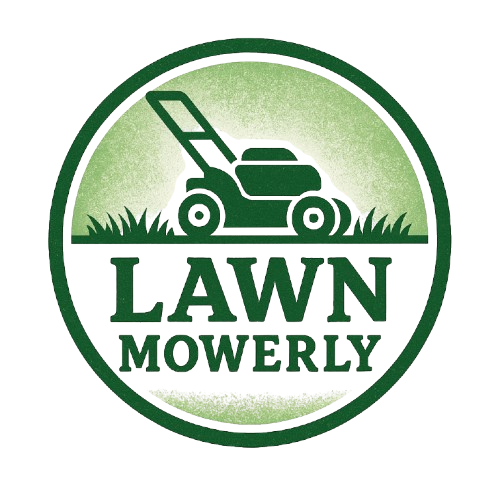
Choosing the right tractor tire is critical for performance, safety, traction, and productivity. Depending on your soil, terrain, and intended use, tire types can greatly affect how well your tractor functions. Among the most popular types are R1, R3, R4, and the newer hybrid R14. Each has unique characteristics that make it suitable for specific conditions.
6 Main Tractor Tire Types
1. R1 (Agricultural or “Ag” Tires)
Description:
Standard for field work, R1 tires feature deep, widely spaced lugs for maximum traction in soft soil, mud, and challenging terrain.
Key Features:
- Aggressive, deep bar-lug tread (about 1.5in tall)
- Narrower width for better “bite” in fields
- Excellent self-cleaning—prevents clogging with mud
- Superior off-road and wet-condition performance
Best For:
Plowing, tilling, harvesting, and general field work.
Pros:
- Unbeatable traction in loose, wet soils
- Great for general farm and rural use
Cons:
- Leaves pronounced tracks—damages turf
- Not suitable for lawns, roads, or hard surfaces
- Wears quickly on asphalt
Notable Variant:
R1W—Deeper lugs (about 20% deeper than R1) for even better performance in especially wet or soggy soils.
2. R2 (Rice & Cane or Deep-Tread Tires)
Description:
Specialized for deep-mud or saturated fields (like rice paddies). Lugs are generally twice as deep as R1.
Best For:
Extremely muddy, waterlogged fields and regions prone to standing water.
Pros:
- Maximizes traction in deep mud and standing water
Cons:
- Unstable on hard surfaces
- Wears rapidly on roads
- Niche use—rare outside specialty fields
3. R3 (Turf or Lawn Tires)
Description:
Developed for minimum surface disruption, R3 tires have shallow, wide-set tread patterns that distribute tractor weight to avoid damaging lawns or soft ground.
Key Features:
- Shallow, smooth tread, often “diamond” or block pattern
- Wide surface area for reduced ground compaction
Best For:
Golf courses, lawns, parks, sports fields, and anywhere a manicured finish matters.
Pros:
- Very gentle on turf—won’t tear up grass
- Good flotation—minimizes rutting
Cons:
- Poor traction in mud or wet soil
- Not suitable for heavy pulling or fieldwork
4. R4 (Industrial or Construction Tires)
Description:
Blending agricultural and industrial design, R4s are thicker, wider, and built for durability on hard or mixed surfaces. Commonly found on tractors that split time between work sites, pavement, gravel, and the field.
Key Features:
- Semi-aggressive lug, wider and shallower than R1
- High ply rating for heavy loads
- Resists punctures and abrasions
Best For:
Construction, loader tractors, landscaping, material handling
Pros:
- Highly durable, long-lasting
- Performs well on mixed or hard surfaces
- Handles heavy loads
Cons:
- Not as much traction as R1 in mud/fields
- More impact on lawns than turf tires
5. Flotation Tires
Description:
Designed for extremely soft or wet ground. Extra-wide, balloon-like shape and minimal tread.
Best For:
Sandy soils, mud, fields with high moisture—often seen on trailers or sprayers
Pros:
- Minimizes soil compaction
- “Floats” over the ground, preventing rutting
Cons:
- Low traction for heavy pulling
- May require tractor modifications for fitment
6. Specialty Tires
- Row Crop/ Narrow Tires: For planting or cultivating row crops, allows tractors to pass between rows without damaging plants.
- Forestry Tires: Extra heavy-duty to withstand rough terrain, rocks, stumps.
- Radial vs. Bias Ply: Radial tires generally offer better traction, ride, and lifespan compared to traditional bias-ply, which tend to be less expensive and more durable to punctures.
R1 vs R3 vs R4 at a Glance
| Feature | R1 (Ag) | R3 (Turf) | R4 (Industrial) |
|---|---|---|---|
| Tread Depth | Deep (1.5in+) | Shallow | Mid-depth |
| Surface | Soft, muddy, fields | Lawns, turf | Hard, mixed |
| Traction | Best in mud/fields | Low | Moderate |
| Load Rating | High | Low | Highest |
| Soil Impact | High (compacts/damages) | Very low | Moderate |
| Road Wear | Very fast | Slow | Slow |
| Best For | Farm fieldwork | Lawns, landscaping | Construction, loader |
How to Choose the Right Tractor Tire
- Terrain: What’s your surface—muddy, soft fields; delicate turf; or hard roads/construction sites?
- Task: Plowing and field tillage (R1); mowing and landscaping (R3); loader or site work (R4).
- Load: Heavier towing or attachments favor R4.
- Budget & Longevity: R4s last longer on mixed surfaces; R1s are best for crop fields.
- Soil Preservation: Turf and flotation tires excel at preventing compaction3.
- Speed & Road Use: Radials and R4s ride better and last longer for tractors covering road distances.
Summary Table: Tire Types, Uses & Tradeoffs
| Tire Type | Surface | Pros | Cons | Best Application |
|---|---|---|---|---|
| R1 (Ag) | Field, mud | Maximum traction, soft soils | Damages turf, fast road wear | Plowing, tilling, harvest |
| R1W (Wet) | Wet field/mud | Deeper grip in mud | Same as R1 | Soggy, wet farmlands |
| R2 | Deep mud, paddy | Superior traction in deep mud | Unstable elsewhere | Rice, sugarcane fields |
| R3 (Turf) | Grass, lawn, park | Minimal damage, spreads weight | Low pulling power | Golf course, lawns |
| R4 (Industrial) | Hard/mixed | Durable, high load, versatile | Not for muddy fields | Loader, construction, road |
| Flotation | Wet, soft, sandy | Least soil compaction | Poor traction for pulling | Sprayer, soft fields, turf |
Top Tire Brands for Traction and Longevity (2025)
Selecting the right tractor tire brand is essential for maximizing traction in the field, increasing operational efficiency, and ensuring the longevity of your investment. Here is an expert overview of the most highly regarded tractor tire brands for 2025, with a focus on their standout features for traction, durability, and real-world performance.
1. Michelin
Reputation: Premium performance, industry-leading innovation, top for traction and wear.
Key Strengths:
- Advanced radial technology with VF (Very Increased Flexion) and IF (Increased Flexion) designs, resulting in a larger, longer footprint and reduced soil compaction.
- Unique tread compounds and deep tread lugs extend service life and boost grip—even in wet or muddy conditions.
- Models like the AXIOBIB 2 and AGRIBIB 2 are engineered for versatility across HP ranges and deliver up to 28–35% more traction compared to older models.
Ideal For: Professional farmers who need the very best in fuel savings, reduced soil damage, and maximum pulling power, even though Michelin tires come at a premium price.
2. Trelleborg
Reputation: High performance, customer favorite, excelling in tough conditions.
Key Strengths:
- Progressive Traction and High Power ranges boast wide, smart-tread geometry for big “bite” in the field, minimal slip, and low compaction.
- TM1000 and TM900 lines deliver up to 28% more power to the ground than most budget competitors.
- Comfort and reliability are consistently rated high by users.
Ideal For: Large properties, heavy-duty and high-horsepower tractors seeking durable, technologically advanced tires
3. Firestone
Reputation: Legendary U.S. brand, trusted for decades for both traction and durability.
Key Strengths:
- Distinctive 23° tread bar (Radial All Traction 23°) delivers excellent grip and smooth ride, especially in dry to normal soil.
- Robust sidewall construction and deep tread ensure long wear and reliability under heavy loads.
- The Maxi Traction models with dual-angle lugs improve performance in wetter conditions as well.
Ideal For: Farmers valuing traditional design and reliability with excellent after-sale support.
4. Alliance
Reputation: Robust, affordable, great for value-conscious buyers.
Key Strengths:
- High-quality radials like the Agriflex+ line offer advanced flexion technology, a large footprint for increased traction, and a strong 10-year warranty.
- Lower price point without significant compromise on performance, making them a smart choice for mixed-use and budget-sensitive operations.
Ideal For: Mixed terrain, large fleet owners, and those wanting premium features without top-tier prices.
5. Apollo
Reputation: Strong domestic leader, wide availability, good warranty.
Key Strengths:
- Precision-engineered tread for both grip and comfort in tough field and road conditions.
- Broad product range ensuring good fit for different tractor sizes and applications.
Ideal For: General utility, mixed agriculture, and buyers looking for accessible after-sales service in India and surrounding regions.
6. Goodyear
Reputation: Global giant, strong in North America.
Key Strengths:
- LSW (Low Sidewall) technology reduces power hop and improves field stability.
- Innovative tread designs and solid performance for a range of farm uses.
Ideal For: North American farms, users who want super singles or advanced radial technology for large equipment
Final Tips
- Always fit the tire to your primary use.
- Avoid R1 on lawns, and R3/R4 in deep or muddy fields.
- Consider radial construction for comfort, longevity, and efficiency on modern tractors.
Choosing the right tractor tire boosts productivity, protects your soil, and extends the life of both your tires and your equipment.
🧮 Comparing Tire Types: R1 vs R3 vs R4 vs R14
| Feature | R1 | R3 | R4 | R14 |
|---|---|---|---|---|
| Traction (Field) | ⭐⭐⭐⭐⭐ | ⭐⭐ | ⭐⭐⭐ | ⭐⭐⭐⭐ |
| Turf Protection | ⭐ | ⭐⭐⭐⭐⭐ | ⭐⭐ | ⭐⭐⭐⭐ |
| Road Comfort | ⭐⭐ | ⭐⭐⭐⭐ | ⭐⭐⭐⭐ | ⭐⭐⭐⭐ |
| Wear Resistance | ⭐⭐ | ⭐⭐ | ⭐⭐⭐⭐ | ⭐⭐⭐⭐ |
| Versatility | ⭐⭐ | ⭐⭐ | ⭐⭐⭐ | ⭐⭐⭐⭐ |
| Cost (avg) | $ | $$ | $$$ | $$$$ |
❓ FAQs About Tractor Tire Types
1. What’s the difference between R1 and R1W?
R1W has deeper treads for better grip in wet fields. R1 is standard for dry soil.
2. Are R3 tires good for snow?
No, R3s are turf-oriented and offer poor traction in snow or mud.
3. Are R4 tires better than R1?
Depends on the task. R4s are better for hard surfaces; R1s are best for farming.
4. Can I switch from R1 to R4 tires?
Yes, but ensure your rims and clearance support the new size and tread.
5. Is R14 better than R1 or R4?
R14 combines strengths of both and is ideal for users who need versatility.
6. Are turf tires (R3) safe on slopes?
Only on gentle slopes. R1 or R14 offer better grip on hills.
7. Which tires are best for loader work?
R4 or R14. They offer strength and traction on hard-packed ground.
8. Do R14s damage grass like R1s?
No. R14s offer better turf protection with good grip.
9. What’s the best all-season tractor tire?
R14s provide good year-round performance for mixed use.
10. How long do tractor tires last?
With proper care: R1 – 3,000+ hrs, R4 – 4,000+ hrs, R14 – TBD but promising.
🧠 Final Thoughts
Choosing the right tractor tire type depends on your terrain, workload, and budget. Here’s a quick guide:
- Pick R1 for fieldwork and farming
- Choose R3 if you want to protect lawns
- Use R4 for construction and heavy utility
- Go for R14 if you want all-around performance
Tires are a long-term investment—matching the tread type to your tasks will ensure maximum productivity and value from your tractor.

I’m David man behind Lawn Mowerly; I’ve been dealing with lawnmowers and Tractors with my father since I was a kid. I know every make and model and what each one is capable of and love helping people find the perfect equipment for their needs.
